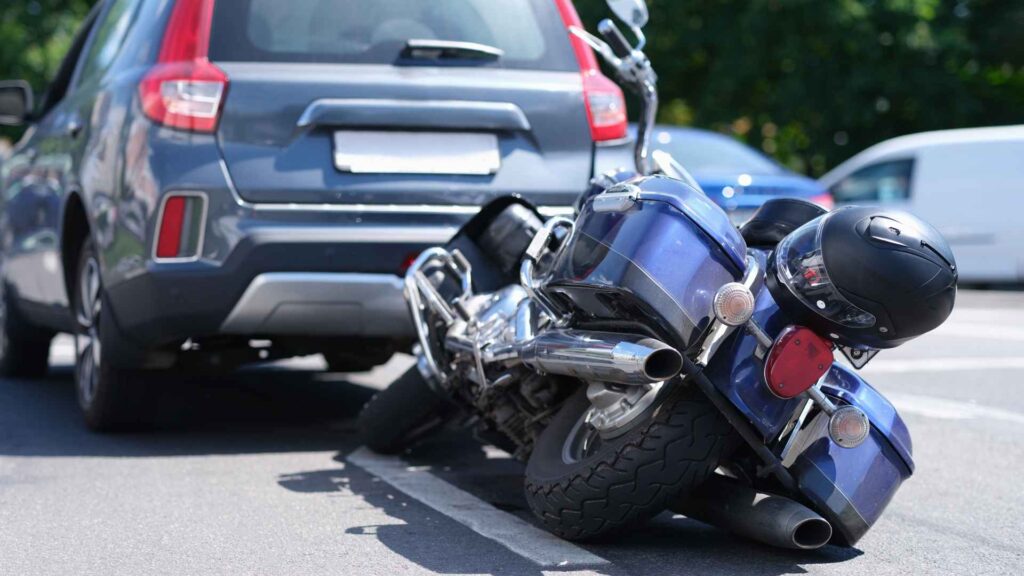Introduction
Motorcycle accidents can be frightening and chaotic, often leaving bystanders feeling helpless and unsure of how to assist the injured rider. While most people may not have formal training in first aid or emergency response, there are crucial steps that anyone can take to save a life or minimize further harm. In this blog, we’ll outline some fundamental actions to take if you witness a motorcycle accident, focusing on prioritizing the most critical aspects of care, especially regarding potential head, neck, or spinal injuries.
Factors to Consider in the Event of a Motorcycle Accident
In the event of a motorcycle accident, it should always be assumed that the victim has a neck or spinal injury. A person who has sustained injuries to the head, neck, or spine should be kept in the same position without moving, touching, or changing their position unless maintaining the current position would jeopardize their life.
Assume the Worst
When approaching the scene of a motorcycle accident, it’s essential to assume the worst-case scenario regarding injuries. The first step is to call 911 immediately. Given riders’ vulnerability, especially concerning head, neck, and spinal trauma, immediate action is crucial. When approaching the victim, try coming from a direction where they can see you coming.When to Move Someone with Head/Neck/Spinal Injury
There are situations where it may be necessary to relocate a person with head, neck, or spinal injuries:- If the individual’s airway becomes obstructed, such as by vomiting.
- If the emergency scene becomes hazardous.
- In regions where there’s no organized EMS response, especially in remote areas.

Check ABCs
Upon reaching the scene of the accident, the first step is to assess the injured rider’s airway, breathing, and circulation (ABCs). Ensure the airway is clear of obstructions, such as blood, vomit, or debris. Look, listen, and feel for signs of breathing or other signs of circulation.Care Procedure
After making the call to 911, approach the victim and restrict movement of the head, neck, and spine as much as possible until EMS personnel arrive. Do not attempt to remove the helmet of the victim if they are wearing one. If the person is responsive, instruct him or her to keep as still as possible. If the individual is unable to remain still, provide manual support to the head to restrict movement. Maintain the person in their current position unless there is an imminent risk or urgent medical attention is required. If there is blood or other fluids in the ear canal or coming from the ear:- Allow the ear to drain naturally without applying direct pressure, and avoid moving the person unless essential.
- Gently cover the ear with a sterile dressing, ensuring it is not too tight.

Signs of Shock
In addition to assessing physical injuries, it’s crucial to watch for signs of shock in the injured person. Symptoms may include pale or clammy skin, rapid breathing, or a weak pulse. If shock is suspected, keep the individual warm and comfortable while waiting for medical help.Register for First Aid Training
Register today for a First Aid training course and learn how to deal with emergencies and keep your loved ones safe! Check out our facilities and book your spot now.
Certified First Responder Steps
The approach to managing a motorcycle accident differs for those with formal training as first responders, such as firefighters or paramedics. These individuals are trained to provide advanced medical care, including immobilization of suspected spinal injuries, administering IV fluids, and providing advanced airway management.
Role of Proper Training

While basic first aid knowledge can be invaluable in responding to motorcycle accidents, proper training significantly enhances one’s ability to provide effective care. Courses in first aid, CPR, and even Emergency Medical Responder equip individuals with the skills and confidence to act decisively in emergencies.
Being helpful in a Motorcycle Accident Scenario
 In a motorcycle accident scenario, every bystander plays a crucial role in potentially saving lives and reducing the severity of injuries. By following simple yet essential steps such as checking ABCs, performing CPR if necessary, and recognizing signs of shock, bystanders can provide invaluable assistance until professional medical help arrives.
Moreover, for those with formal training as first responders, advanced interventions can further improve outcomes for injured riders. While proper training enhances one’s ability to respond effectively, even those without formal training can make a significant difference by taking swift and decisive action in critical moments.
Enroll in a training course with Coast2Coast today and get properly equipped to deal with various medical emergencies including a motorcycle accident.
In a motorcycle accident scenario, every bystander plays a crucial role in potentially saving lives and reducing the severity of injuries. By following simple yet essential steps such as checking ABCs, performing CPR if necessary, and recognizing signs of shock, bystanders can provide invaluable assistance until professional medical help arrives.
Moreover, for those with formal training as first responders, advanced interventions can further improve outcomes for injured riders. While proper training enhances one’s ability to respond effectively, even those without formal training can make a significant difference by taking swift and decisive action in critical moments.
Enroll in a training course with Coast2Coast today and get properly equipped to deal with various medical emergencies including a motorcycle accident. Register for EMR Training
Coast2Coast offers Pre-Hospital Care courses and training to First Responders, and those providing care in a pre-hospital setting. All of our training is based on the Canadian Red Cross guidelines. Click in the button below and learn more our EMR course.



















